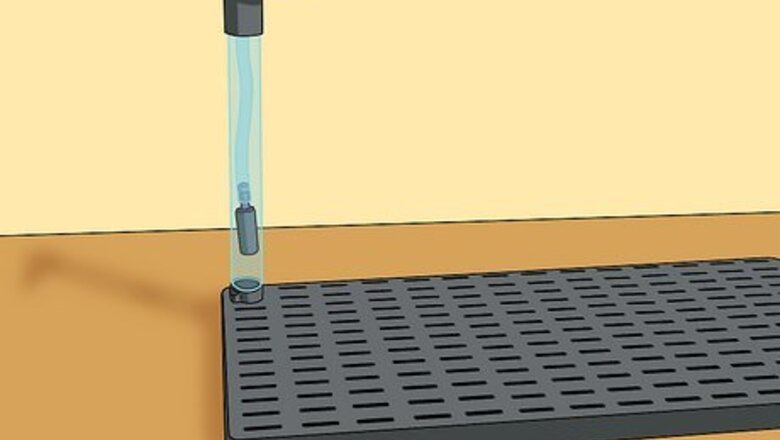
views
X
Research source
You can purchase one at any large pet store or aquarium shop. Be sure to read the filter instructions before you begin the installation since different models may have slight variations to their installation.
Preparing the Filter and Aquarium
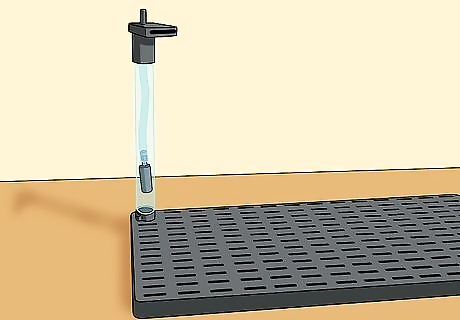
Select a filter that’s designed for the volume of water your tank holds. Visit your local pet supply store and look at their selection of filters. Find one that is manufactured to filter the size of the tank that you own. For example, if you have a 20 US gal (76 L) tank, a filter designed for a 10 US gal (38 L) tank would be inadequate. If a local store doesn’t have a suitable filter, you can also find undergravel filters through online aquarium suppliers or major online retailers.
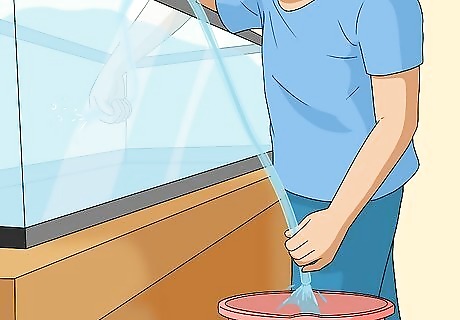
Empty the aquarium if it’s already filled with water. Ideally, install the UGF before filling the tank with water and adding fish. But, if you're installing a UGF on a tank that's filled with water and marine life, don’t worry. Carefully remove any decorations as well as the fish and transfer them to a container filled with water that meets the requirements for their species. Then, submerge a 3–4 ft (0.91–1.22 m) long length of flexible plastic tubing in the bottom of the tank. Once the hose has filled with water, lift out 1 end of the hose and place your thumb over the opening. Point the end into an empty bucket of water and remove your thumb. This will siphon all of the water out of the fish tank. If the water is relatively clean, you can pour it back into the tank once you’ve installed the filter.
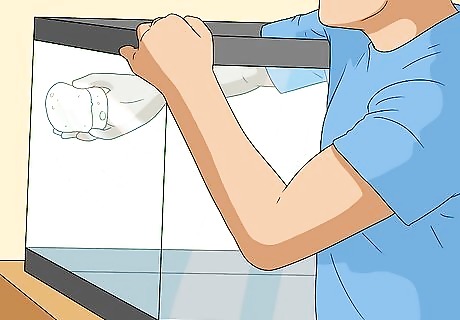
Clean the aquarium before installing the filter. To avoid getting any dirt or other contaminants into the filtration system, clean each separate part of the aquarium before installing a UGF. Remove the tubes and piping and rinse them under clean water. Avoid using soap and other cleaners, which could contaminate the filter. Use fresh, clean water when you’re washing the parts of the aquarium. Dechlorinated water is best.
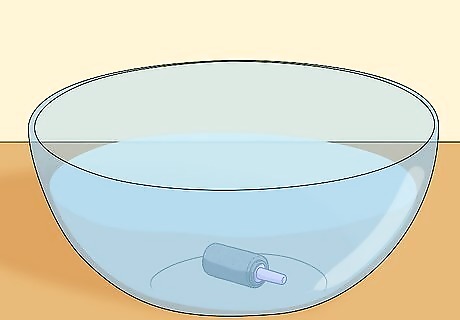
Soak the aquarium bubbler and rinse the tubing to ensure they're clean. Take the bubbler (also called an air stone) that came with the filter and place it in a bowl of clean, fresh, dechlorinated water for 5 minutes. Soaking it will ensure the bubbler has been fully saturated with clean water and that any bits of dirt or debris have been washed out of the bubbler. Once it’s been soaked, thoroughly rinse the bubbler and flexible airline tubing using clean, fresh, dechlorinated water to remove any remaining factory dust. Use caution to avoid damaging the air stone or breaking off the plastic connector valve.
Placing the UGF in the Tank

Connect the hard, clear, plastic tube that will house the bubbler. This tube will direct air bubbles upward to the water's surface. The connection point should be fairly obvious to identify on the installed baseplate: it’s a ⁄4 in (1.9 cm) opening in one of the corners of the plate. Ensure that the plastic airtight tube is securely connected so that it will not be dislodged by bubbles from the bubbler. As you install the tube, be careful not to use too much force when connecting the tube and baseplate to avoid breaking or warping the plastic.

Connect the rinsed end of the flexible airline tubing to the bubbler. The end of the tubing should slide over the plastic valve sticking out of the bubbler. The tubing stays in place over the plastic bubbler valve by friction, so press the airline tubing firmly into place to secure the friction fit. Make sure the tubing is securely attached while taking care not to break the plastic valve on the bubbler.

Place the bubbler in the housing tube. Once you’ve attached the tubing to the end of the bubbler, thread the bubbler down to the bottom of the hard plastic tube that came with the filter. The hard tubing will keep the airline tubing upright and connect the bubbler to the water output vent. When installed in place, the bubbler should sit at the bottom of the housing tube construct, very near the level of the baseplate.

Connect the free end of the flexible airline tubing to the air pump. Place the air pump on a flat surface next to or behind the fish tank. The pump will provide the power needed to pull up water through the filter. Make sure not to force the tubing onto the valve too hard to avoid splitting the soft plastic tubing.
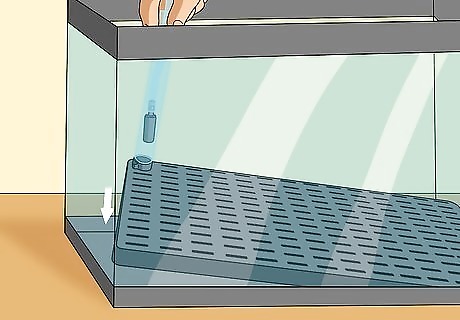
Place the baseplate on the bottom of the empty aquarium. Be aware of where the bubbler housing tube will connect to the baseplate. The vertical, hard plastic bubbler housing tube is generally placed at the back of the tank so that the bubbles it produces do not obscure the observer's view of the aquarium. Try to center it as best you can. It should align easily with the walls of the aquarium if the UGF was specifically designed to work in the size of aquarium you own. If the UGF was not designed to fit the bottom of a specific aquarium, but rather a limited range of aquarium dimensions, it may be a little more difficult to keep the baseplate centered during installation. For example, you may need to use 1 hand to hold the loose baseplate in position while you pour in the gravel around it.
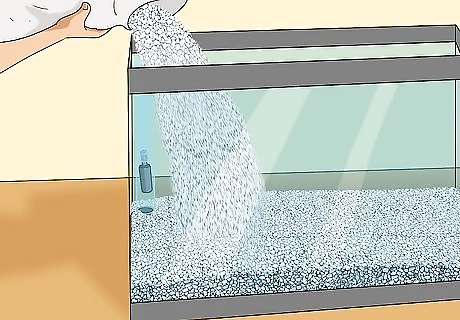
Pour the gravel on top of the baseplate. A plastic cup or small aquarium scoop may be helpful in transferring the gravel into the aquarium. Cover the baseplate and any exposed aquarium bottom completely with about 2 inches (5.1 cm) of gravel. Try to keep the baseplate centered and avoid letting gravel get underneath the baseplate or inside the bubbler housing tube. If the gravel is new and unused, you won't need to rinse it before depositing it on top of the baseplate. Use about 2 pounds (0.91 kg) of gravel for every 1 gallon (3.8 L) of aquarium. Deposit the gravel gingerly inside the aquarium tank so that the gravel doesn’t scratch the sides of the aquarium.
Finishing Setup and Cleaning the Filter
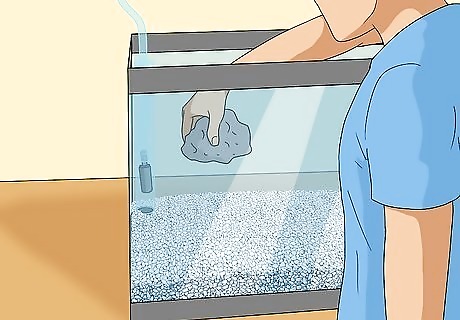
Situate the aquarium and add decor inside the tank. At this point, the aquarium must be placed in its permanent location. So, make sure it’s located on a shelf or tabletop with a nearby outlet so you can plug in and power the air pump. Once the aquarium is in place, rinse and install any rocks, novelty items, or plants you’d like to be in the tank. Only place an aquarium on sturdy furniture that can withstand the weight of a full aquarium; water is deceptively heavy. Some aquarium hobbyists place a towel or padding on top of their aquarium furniture before placing the aquarium on top to help keep the aquarium level and absorb any droplets that may splash out and roll down the outer surface of the aquarium.
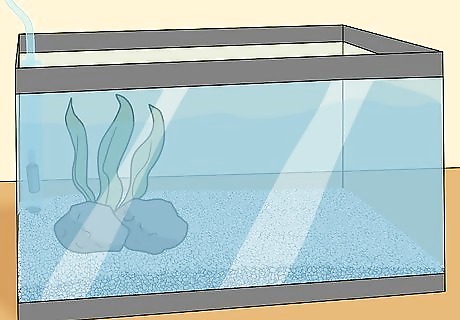
Fill the aquarium with fresh, clean, dechlorinated water. Purchase the necessary amount of dechlorinated water from a supermarket. While you’re pouring the water into the aquarium, use patience and pour slowly so that the items in the tank aren’t disturbed as you pour. Fill the tank with the recommended amount of water. For example, pour 30 gallons (110 L) of water into a 30 US gal (110 L) tank. Try not to disturb your decor or expose the UGF baseplate. It should remain covered by gravel once you’re done pouring in the water. If anything is moved out of place, after the tank is filled, reach 1 arm in and re-position the item. Depending on the type of fish you have, you’ll also need to adjust the temperature of the water as well as its ammonia and pH levels.
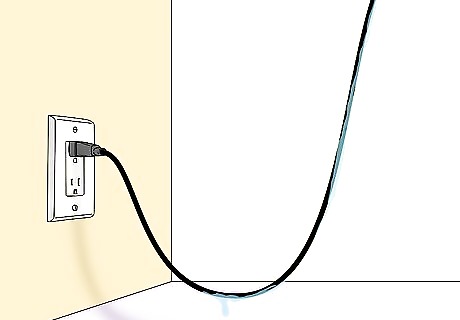
Plug in the air pump to the wall outlet. When you plug the pump in, make sure to leave a "drip-loop": a section of hanging cord that prevents water droplets from rolling down the electrical cord and reaching the outlet. With a drip-loop in the cord, any water will accumulate at the lowest point of the loop and drop from there onto the floor. You will hear a gurgling sound as air begins to travel through the tubing into the air stone inside the aquarium. If installed correctly, a column of bubbles should form inside the plastic bubbler housing within a few seconds. This indicates that the UGF installation is complete. If you don't see a column of bubbles, check the components of the bubbler tube and make sure everything is snugly assembled.
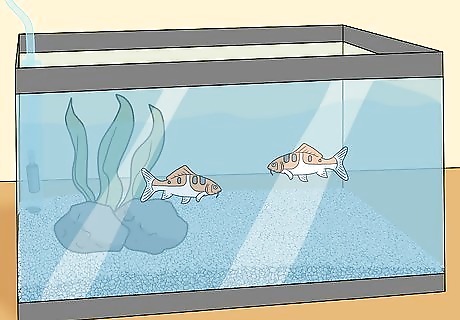
Add your fish back into the filtered fish tank. If you removed your fish prior to installing the filter, now is the time to deposit them back into the tank. Pick up the container that your fish are swimming in and hold it low over the surface of the water in the tank. Scoop the fish up one by one and gently deposit them in the water. Then, pour out the excess water from the container. Alternatively, you can avoid this entire process if you set up the undergravel filter before you purchase and bring home fish from the pet store.

Change 1/4 of the water in the tank weekly to keep the UGF working. Since undergravel filters work by pulling water—and the impurities that build up in the tank—down through the gravel, it’s important that both water and gravel remain clean. So, once a week, use a large bucket and piece of tubing to siphon out roughly half of the water in the tank. Replace the amount you removed with clean water. Make sure that you’re using dechlorinated, temperature-appropriate water so you don’t harm your fish. If you’d prefer to fill the tank with tap water, you can purchase a dechlorinating agent from your local supermarket. This will remove chlorine from the water and make it safe for fish.
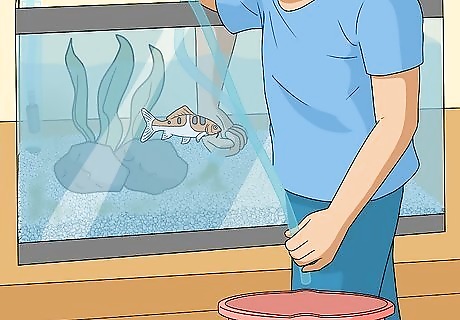
Siphon grime off of the gravel every time you change the water. If leftover food, fish excrement, and organic detritus are left to build up on the bottom of the tank, they’ll soon clog up the UGF. Clean off the underwater gravel by using a piece of plastic piping to siphon the organic detritus off of the bottom of the tank. When finished, you’ll have a bucket full of dirty water. Empty this into a toilet or use it to water indoor and outdoor plants.














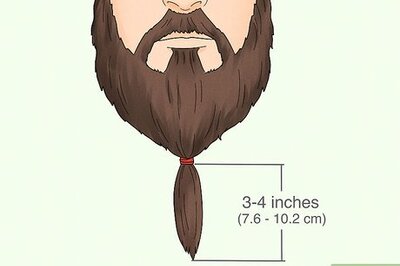
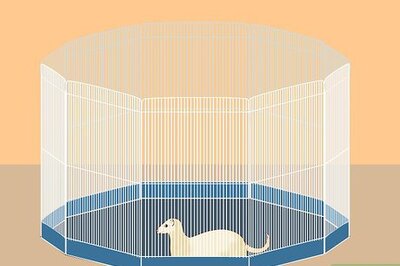

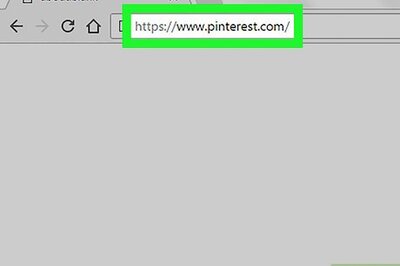
Comments
0 comment